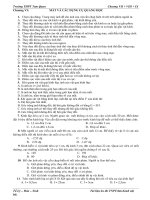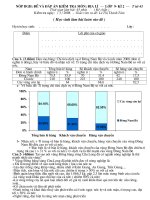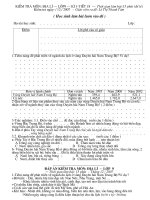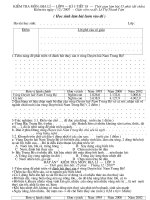D9 c9 f2 BDA f35 BAE f8 EC f76 f345
Bạn đang xem bản rút gọn của tài liệu. Xem và tải ngay bản đầy đủ của tài liệu tại đây (13.82 KB, 1 trang )
82
6
Review and Follow-Up
After the drawings and the ®nal BoM have been released for production, there is
usually a quiet time for the designer, as far as this mold is concerned. Hopefully,
there are no problems in buying and machining. If there are problems in the
shop, for example errors in machining orÐheaven forbidÐerrors in the
drawings, any corrective action must be approved and recorded by the designer
or his delegate. There is always the possibility that the same mold will be
required again maybe in a year, or much later, and it would be embarrassing if
the same errors would then be repeated. After the mold is ®nally ready for
testing, the designer must be present and see that the installation and setup
procedures are in accordance with the speci®cations on the assembly drawings.
The designer must also approve any changes required to make the mold work as
expected and record what was done to make the mold work before it is shipped.
A complete report, specifying the test machine, all temperatures, times, pressure
settings, and plastics speci®cations should be supplied to the customer, together
with the mold.
A good designer will then follow up the mold with the molder, especially in
case the designer has not heard from the molder ®rst, to see how the mold works
in production. Unfortunately, frequently, a mold goes into the customer's
molding shop, and if there is any problem, the shop people cannot be bothered
to go back to the mold maker but make adjustments that may not have been
necessary if they had followed the instructions received with the mold. Any later
problems experienced by the customer should also be recorded for future
reference.









